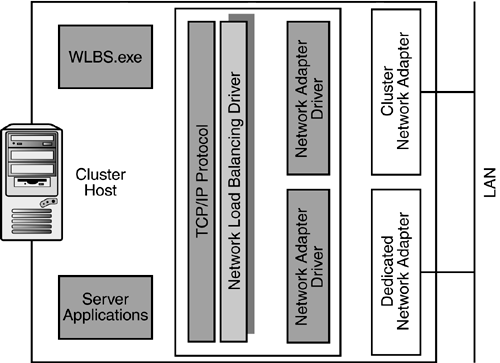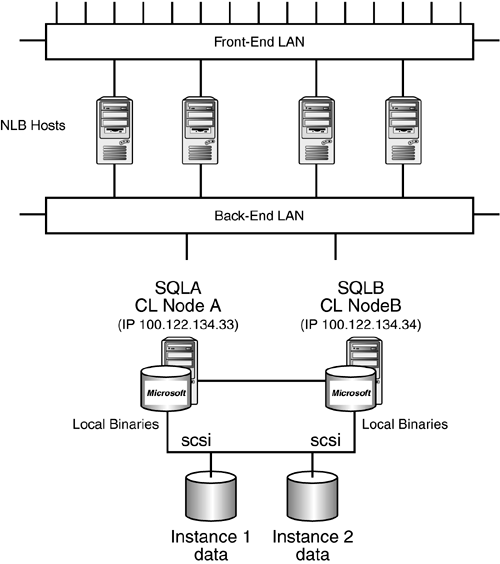Network Load Balancing
| Now the picture grows a bit more to include network load balancing (NLB) so that you can truly enter into the realm of high availability and reliability at the enterprise level. Network load balancing serves to balance incoming IP traffic among multinode clusters. If done correctly, this load balancing will provide ample scalability and high availability to enterprise-wide TCP/IP services such as Web, Terminal Services, Proxy, Virtual Private Networks (VPNs), and streaming media services. NLB sits between the TCP/IP protocol layer and the Network Adapter drivers. Figure 24.6 shows this positioning as an intermediate driver in the Windows 2000 network stack. Figure 24.6. Network load balancing internals positioning. Identical copies of the NLB drivers run in parallel on each cluster host. By this means, in-coming client requests are partitioned and load balanced among the cluster hosts. Figure 24.7 illustrates a four-host NLM cluster architecture acting as a virtual server to handle the network traffic. Each NLM host works together among the four hosts distributing the work efficiently . Figure 24.7. An NLM host cluster with a two-node server cluster. Up to 32 NLB servers, called hosts, can be in any one host cluster. Each NLB server distributes its client requests across multiple servers within the cluster. As traffic increases , additional NLB servers can be added to handle this increase. In addition, NLB can automatically detect the failure of a server and repartition client traffic among the remaining servers. |
EAN: 2147483647
Pages: 503
- Chapter V Consumer Complaint Behavior in the Online Environment
- Chapter VII Objective and Perceived Complexity and Their Impacts on Internet Communication
- Chapter IX Extrinsic Plus Intrinsic Human Factors Influencing the Web Usage
- Chapter X Converting Browsers to Buyers: Key Considerations in Designing Business-to-Consumer Web Sites
- Chapter XVII Internet Markets and E-Loyalty

